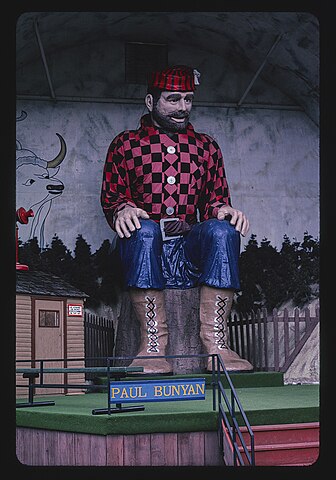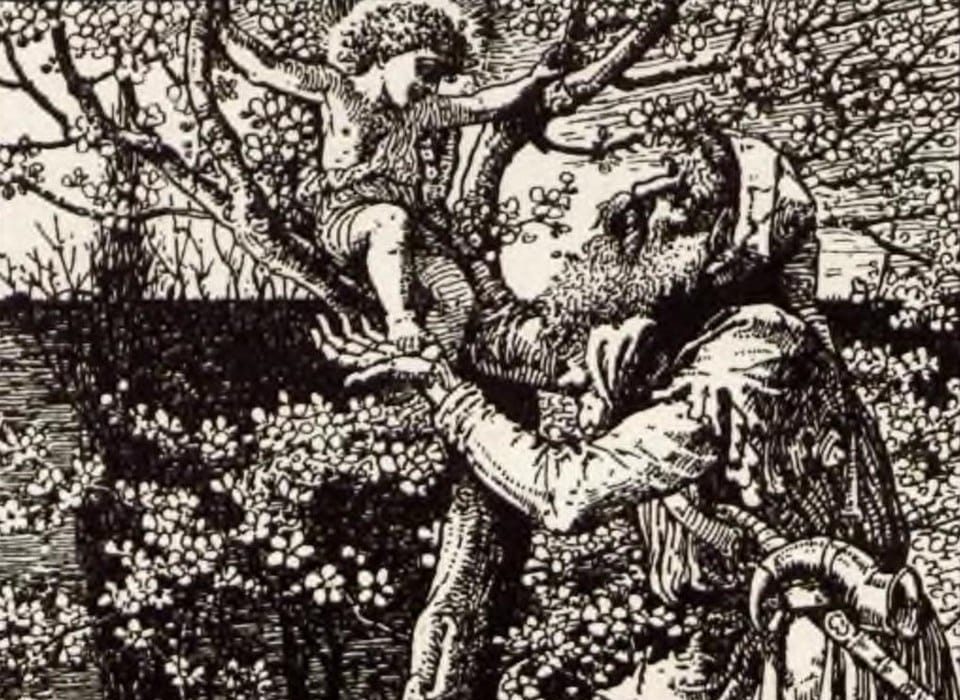Zeus, The Headless Horseman, Paul Bunyan, and Bigfoot all share some commonalities. Clearly, there are supernatural and fantastical elements in each of their stories, but how do myths, legends, and tall tales differ? And, how can we distinguish between them? It becomes much easier to understand these differences if you consider the context and typical usage of each term. In this post we will understand how each of these terms share similarities and differences.
What is a Folklore?
Folklore is an umbrella term that encompasses all oral tradition. If you can think of a story that you’ve heard passed down from your great-grandfather, to your grandfather, to your father, and now down to you, then you have encountered folklore. The titans, King Arthur, Nessie, and the Slender Man are all forms of folklore. They are cultural, they are stories, and they are passed down. It’s as simple as that.
What is a Myth?
The word “myth” is derived from the Greek word “mythos.” This means “story.” Mythological stories are rooted in religion or folkloric beliefs and they help define the origin of a culture.
As one source states: “… myths can be used to demystify a supernatural or unresolved event. Myths present reality in a sensational way, often using creatures and gods.” For instance, if one hears a story about the origin of a holiday tradition—say, the story of Old St. Nick—they are probably hearing a myth because Santa Claus is a “sensational,” god-like creature who surreptitiously visits homes on Christmas Eve and leaves gifts for children. This explanation clarifies Christmas for younger folks and is passed down from parents as well.
Mythic stories reflect society’s attempts to understand how things in the world came to exist, even though they incorporate supernatural elements. That’s why they typically feature nonhuman characters doing things that could be construed as supernatural. For a better understanding, think about the Greek gods and all the stories and movies you’ve heard or watched that detail their exploits and existence. Myths = Mt. Olympus.
What is a Legend?
Much of people’s confusion between myths and legends come from their similarities. Legends share the same qualities as myths. These include supernatural elements, unbelievable characters or monsters, first-hand accounts, etc. Yet, the major difference is that they come from the recent past, have historical roots, and are passed from one generation to the next.
Robin Hood and King Arthur fit the mold of a legend because they come from the semi-recent past. They aren’t some far off idea that is foggy in time. We can see them and their relationship to our own lives. Legends also have historical connections (they could be real), and they people have passed them down through oral, visual, and textual mediums. It should go without saying, but legends often walk a careful balance between reality and fiction.
To better understand this, think about Bigfoot, or more accurately, think about The Legend of Bigfoot. We aren’t entirely sure what the cryptid looks like (its big and hairy at least), and it only gained popularity relatively recently in the late ’60s or early ’70s. However, the Bigfoot story is now very popular. As such, people still pass their own stories down from one generation to the next.
What are Tall Tales?
Tall Tales are those wacky stories you remember form when you were a kid. They tell something about an immediate culture’s history or how something came to be in the world. Likewise, cultures preserve these stories through cultural traditions like music, pictures, interpretations, and more.
When you think about the stories of Pecos Bill and Johnny Appleseed, then you have some idea of a Tall Tale. They are like sagas that feature protagonists completing tasks that shape the world as we know it. Did they really do the things those stories said they did? Well, probably not, but those stories do help us understand the world around us.
Moreover, much like legends and myths, society passes down tall tales from generation to generation through a variety of mediums. Tall tales often feature conflicts resolved in some extraordinary way. For instance, Johnny Appleseed saw a lack of apple trees, therefore he spread them across the entire country on foot. either through strength, ingenuity, or sheer gumption. Paul Bunyan battling Babe the Big Blue Ox is one of these stories. At first, they are enemies, but this changes after they exhaust each other with their fighting. As it relates to tall tales, both are supernatural, and their giant sizes are responsible for shaping parts of U.S. geography, at least according to the story.
Remembering Folklore, Myth, Legend, and Tall Tales
The easiest thing to remember is that folklore is an umbrella term. Therefore, myths, legends, and tall tales form underneath this term and have their own nuances. Regardless of their differences, myths, legends, and tall tales serve a continued purpose of understanding. Myths, legends, and tall tales (all of folklore for that matter) continue to be important to society for their ability to help show us the world we live in through different lenses.





Leave a comment